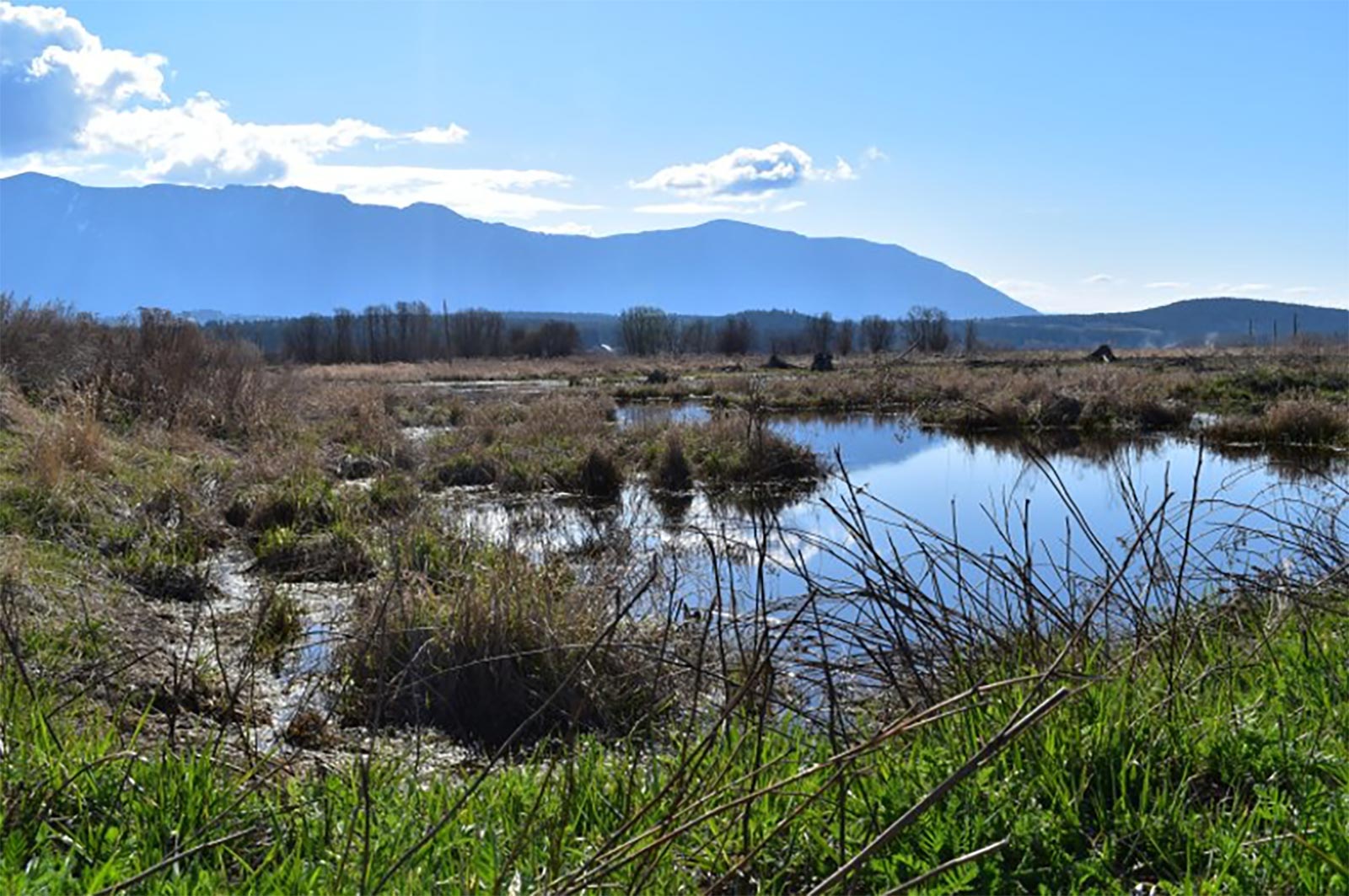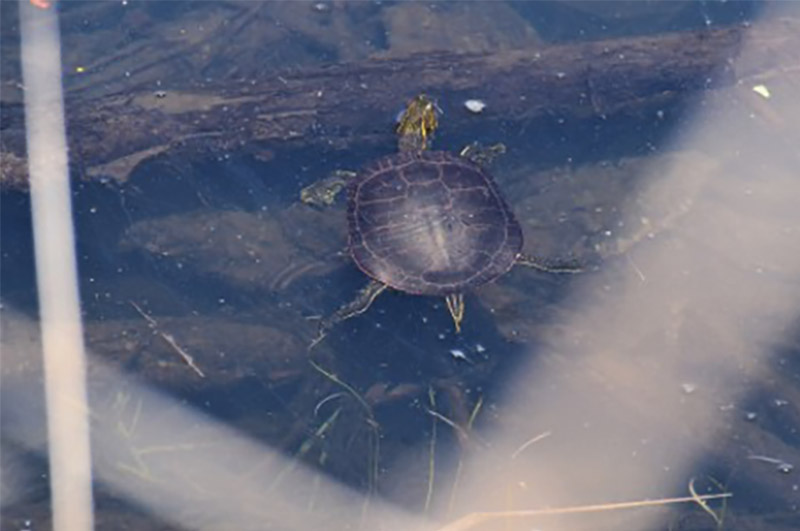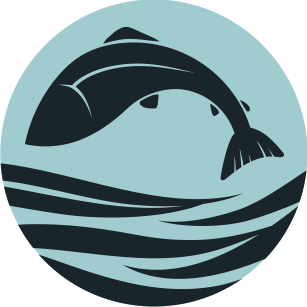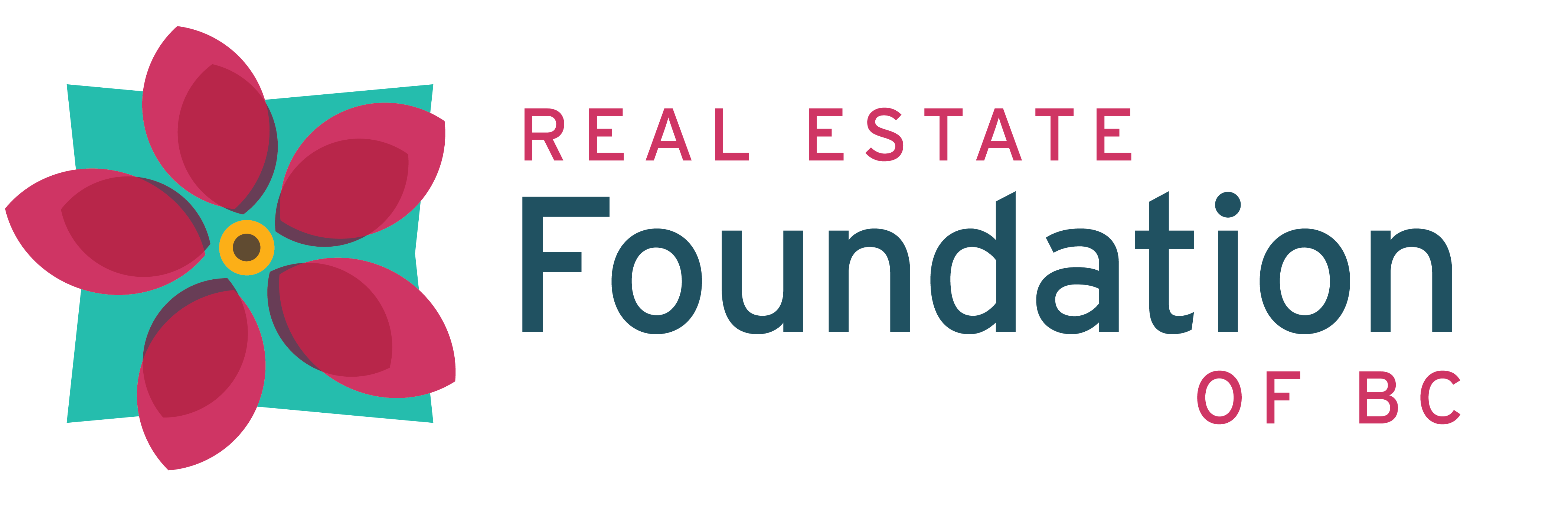Spotlight: Yaqan Nukiy Project
This story was originally published on the Wetlands Workforce blog, on 12 May 2021.
Wetlands Workforce Provides a Helping Hand to over 517 Hectares of Wetlands
“These areas are just as important to the world as lakes and rivers. They are a whole system onto themselves. They integrate from everything that uses land to everything that uses water.”
Norman Allard, Community Planner, Lower Kootenay Band
Nestled between the Purcell and Selkirk Mountain ranges in the Creston Valley, a massive wetland restoration project is taking place. Over the last three years, the B.C. Wildlife Federation’s Wetlands Education Program has been working in partnership with the Lower Kootenay Band on two landscape-scale restoration projects on traditional Yaqan Nukiy territory. The Yaqan Nukiy Wetlands project site is well over 517 hectares in size. As of 2021, over 121 hectares of the site’s floodplains, wetlands, streams and rivers have been restored and connected for a variety of wildlife species.
For Norman Allard, Yaqan Nukiy Lower Kootenay Band Community Planner, wetland projects like these provide the best bang for your buck when it comes to restoration.

A major aspect of the Yaqan Nukiy Wetlands project was decommissioning impoundment dikes. By doing this, it allows for the Kootenay River to naturally fill in the floodplain, while wetlands have been constructed to create seasonal and perennial pools for a variety of species habitat needs. (Photo: Cheyenne Bergenhenegouwen)
“This work is important because wetlands are some of the most valuable habitats you can restore that cover a vast majority of everything within the area. In restoring wetlands, you can create habitat for a range of animals, plants, invertebrates, amphibians and fish. Everything uses them.”
Norman began working with the Lower Kootenay Band doing Geographic Information System mapping (GIS). He then moved into the position of Community Planner and has since been managing the environmental restoration projects for the band.
“When I first started these projects, I thought wetlands were just puddles that dried up. I didn’t know much about it,” said Norman. “However, in doing this work, I have learned a lot about wetlands and their importance. They are one of the best habitats you can have.”

The Western painted turtle is one species that benefits from the habitat being created and improved by this project. (Photo: Cheyenne Bergenhenegouwen)
Norman spends as much of his time outside the office as he can, walking around the wetlands, taking in the vast area he has helped restore. For Norman, it is not the size of the project that has been the biggest challenge; rather it has been challenging to integrate all the different aspects of the environment together. There are several different environmental fields the project encompasses, from birds to fish to amphibians, turtles, invertebrates and even bats.
“Taking everybody’s view on the project and turning it into a holistic restoration, that benefits everything across the board has been one huge puzzle to put together.”
One of the major aims for the Yaqan Nukiy Wetland project is to provide habitat for waterfowl, elk, moose grizzly bear, mule deer and amphibians. Many species at risk will also benefit from this project, such as the Western painted turtle, Northern leopard frog, Brown bats, White sturgeon and Burbot. However, Norman explains that they are not just keen on helping listed species.
“Take, for example, Kokanee. They are not yet a listed species, and they are not one of our target species for this project, but their spawning events add nutrients back into the system that benefits things like the Burbot and the Sturgeon, which are bottom feeders. In restoring habitat for Kokanee, it benefits other species. Everything out here was connected before. This project is basically putting the land back, as closely as possible, to its natural function.”
The Wetlands Workforce Provides Support
The Lower Kootenay Band is one of the Wetlands Workforce partner organizations. Through the Wetlands Workforce project, the band hired a crew to help with what needs to be done on the site.

Wetlands Workforce crew members, Aila and Warren, are helping to install 35 poles, cameras and audio recorders for the Wildife Monitoring Program at the Yaqan Nukiy Site (Photo: Cheyenne Bergenhenegouwen)
With a site that is over 517 hectares in size, extra hands are greatly appreciated.
“Having the Wetlands Workforce crew out here will allow us to get a handle on the invasive species and a lot of the monitoring work that needs to be done,” said Norman. “They will be helping us clear a lot of the work out of the way that we wouldn’t be able to get to.”
The crew have collected willow and cottonwood live stakes and have potted them to help promote root growth before they are planted in the wetlands. In mid-April, the crew installed wildlife cameras as part of a four-year Wildlife Monitoring project the Lower Kootenay Band is doing in partnership with the B.C. Wildlife Federation. Wildlife Habitat Canada is funding this project. The Wetlands Workforce crew reinstalled the cameras and audio recorders for the second year of data collection. This required placing 35 heavier and sturdier wooden poles three feet deep in the ground and strapping the wildlife cameras and audio recorders to the top.
The data collected from this project will help determine if the restoration project is effective at supporting target wildlife species for various life needs, such as foraging, shelter, breeding, and rearing habitat.
The crew will be helping with various other maintenance and monitoring tasks over the course of the year and will be providing help during Phase 4 of the Yaqan Nukiy Wetlands restoration project, which begins this summer.
Norman sees initiatives like the Wetlands Workforce as an opportunity for people to get outside working in wetlands, with the hope that they will become interested in these ecosystems, recognize their importance and see that they are not just puddles that dry up.

Norman Allard, LKB Community Planner digs a hole that is two to three feet deep to install poles for the wildlife cameras and audio recorders. (Photo: Cheyenne Bergenhenegouwen)
“These areas are just as important to the world as lakes and rivers. They are a whole system onto themselves. They integrate everything that uses land to everything that uses water. Having more people learn about that and become interested in it will get us away from the stigma that wetlands are just mosquito-infested areas that need to be filled in.”
From work Norman has done on the Yaqan Nukiy site and from what he has learned over the years, he reflects that restoration work is going to be key in the coming years.
“We need to start doing more large-scale projects and closely monitor what is going on so we can start applying that across the world in the face of climate change. We are going to need to go back to these degraded areas and start putting them back to as best functioning as possible because it is only going to benefit the world in the long run.”
You can read more about the Yaqan Nukiy Wetland Restoration Project here.






